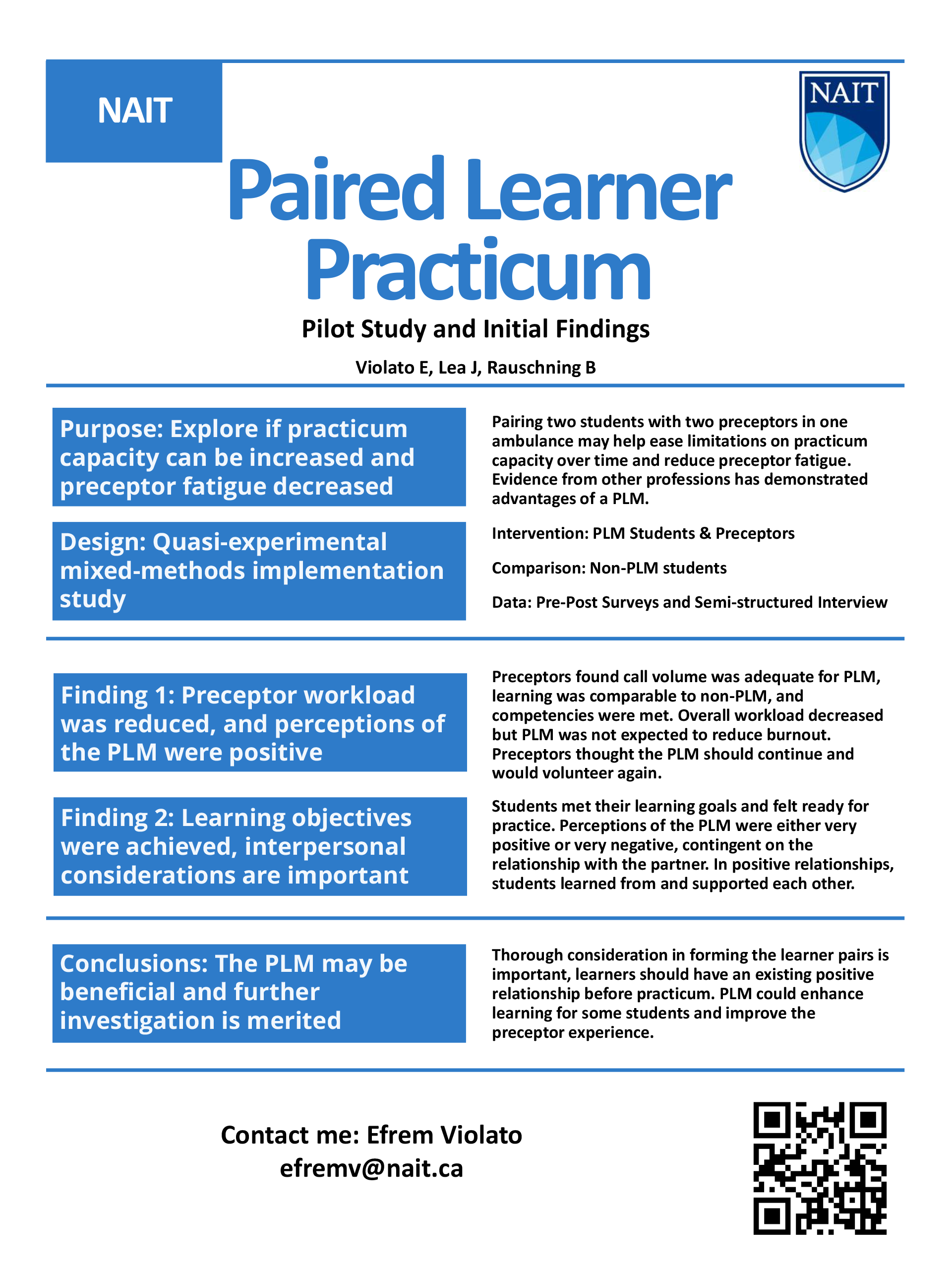|
Title
Paired Learner Practicum: Pilot Study and Initial Findings
Introduction
For students completing Primary Care Paramedic (PCP) ambulance practicum a single learner-preceptor dyad is standard. With a large volume of PCP students requiring placement, a high degree of burden is placed on preceptors resulting in fatigue, potentially reducing placement opportunities. To reduce preceptor fatigue and improve practicum capacity a Paired Learner Model (PLM), pairing two PCP students with two preceptors, may be effective. The PLM is used in other health professions and informally in paramedicine. The PLM may reduce the number of ambulances required for placements and enhance student and preceptor experience. Though some precedent exists the PLM is not widely used, and feedback is anecdotal.
Objective
Investigate if a PLM is practically feasible, meets pedagogical objectives, improves the preceptor experience, and could potentially reduce the number of ambulances required for placements.
Methods
A quasi-experimental mixed-method implementation study was conducted with three groups: students in the PLM practicum, students in the standard practicum, and preceptors in the PLM practicum. Eight participants were targeted for recruitment from each group. The study had two stages: 1) pre-practicum questionnaires; 2) post-practicum questionnaires and semi-structured interviews. Questionnaires and interviews addressed the specific implementation issues related to the PLM.
Results
Student’s PLM experience was highly variable with very positive and negative experiences reported. The negative experiences primarily resulted from interpersonal issues that arose with the other student. Students found the PLM was a safe and effective learning environment and felt prepared to practice as a paramedic. Post-practicum preceptors thought students were well prepared to practice. Preceptors did not think the PLM affected burnout, as burnout is unique and complex, but found the PLM reduced workload. Overall, preceptors thought the PLM could help train more students and reduce the number of ambulances. All preceptors would volunteer for future PLM and thought the PLM should continue.
Conclusions
Initial findings indicate the PLM may be beneficial and use should be further investigated. The formation of learner pairs should be carefully considered. Practicum assessments can provide additional objective evidence of competency attainment.
|



